9 places you can't miss in Alcúdia, Mallorca
Monday, February 19, 2018
Alcúdia is ...
To many people, Alcúdia, is synonym to crystal clear uncontaminated water, 14 km of silky soft beach line and unforgettable childhood holiday memories. Alcúdia is an amazing place; it is versatile, extensive and full of fun activities for all ages.
However, what many tourists fail to experience, is the rich cultural heritage the old town of Alcúdia has to offer, which is a shame, because Alcúdia is like an open-air museum of important landmarks explaining the history and culture of the Mediterranean region.
The name of Alcúdia comes from the Arab "al-cudia", and means "on the hill".
Alcúdia was declared a historical place of interest in 1972, and you are about to see why.
Roman ruins of Pollentia
The overall attraction in Alcúdia, is the ruins of the Roman town called “Pollentia”. Pollentia was the first capital of Mallorca, it was established around 123 BC after the Roman army had finally conquered the island and beaten down the Carthaginians during the three Punic wars.
Pollentia introduced a new way of living, an urbanization like the ones we know today. The excavations of this place was carried out during the 20th century, yet there is still more to discover. All artifacts found in this site are exhibited in the nearby historical museum of same name, well worth a visit.
Some of the most interesting places inside the Pollentia area are; the necropolis, the theatre, the forum and the temples. Moreover, archaeologists have mapped out the main shopping street and civil homes of the city.
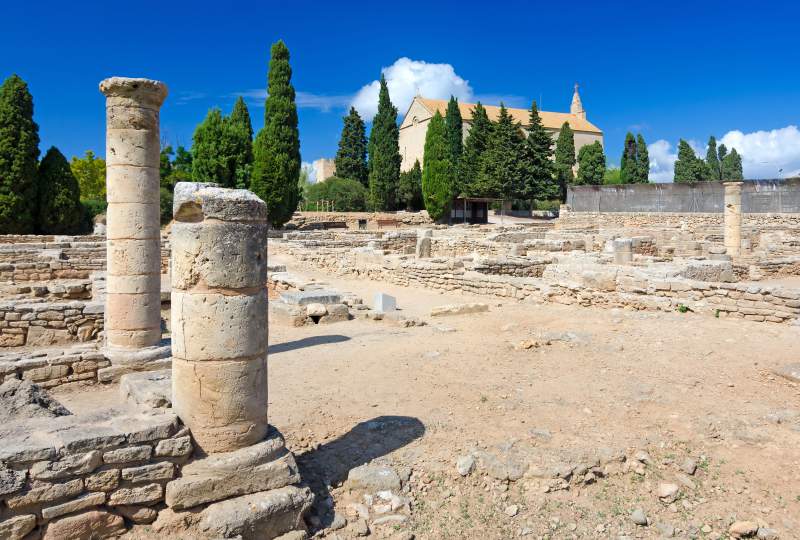
Chapel of Santa Anna
Across the street from Pollentia, you will see a small chapel. This is the chapel of Santa Anna, and is the most well preserved church construction on Mallorca, dating back from the 13th century.
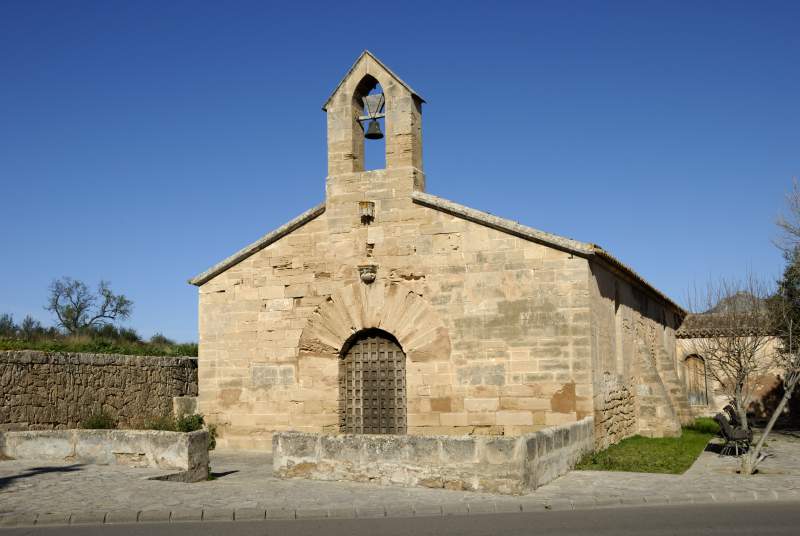
Sa Bassa Blanca and the Yannick & Jakober foundation
Sa Bassa Blanca, is one of the most stunning examples of mixed architecture from the Mediterranean region. The building was designed by Egyptian architect, Hassan Fathy, who mixed stylistics from Andalusia, North Africa and the Basque country. Sa Bassa Blanca, is situated in one of the most privileged locations in all of Alcúdia directly on the slopes overlooking the amazing bay of Alcúdia, on the peninsula of Alcanada.
Inside Sa Bassa Blanca, you will find one of the island's most sought for art exhibitions, the Yannick & Ben Jakober foundation. The art museum is established by Vietnamese Yannick Vu and Austrian Ben Jakober, a couple who have received numerous awards for their own works.
The overall artistic shrine, is the exhibition hall called "SoKraTES", which is an old water depot transformed to an exhibition hall decorated with diamonds.
The museum also include a famous collection of portrait paintings of children of noble and royal families from the late Middle Ages.
In the gardens surrounding this majestic building, you can stroll around between the extensive park of animal sculptures made by Yannick Vu.
Sa Bassa Blanca is probably the only art space on Mallorca suitable for children, and a must see sight for any cultural ambassador.

t published — only you can see it. To publish, please Edit and use the Publish Now button.
- HubPages»
- Travel and Places»
- Visiting Europe
9 places of interest you can't miss in Alcúdia, Mallorca
Updated on January 1, 2018
Alcúdia is ...
To many people, Alcúdia, is synonym to crystal clear uncontaminated water, 14 km of silky soft beach line and unforgettable childhood holiday memories. Alcúdia is an amazing place; it is versatile, extensive and full of fun activities for all ages.
However, what many tourists fail to experience, is the rich cultural heritage the old town of Alcúdia has to offer, which is a shame, because Alcúdia is like an open-air museum of important landmarks explaining the history and culture of the Mediterranean region.
The name of Alcúdia comes from the Arab "al-cudia", and means "on the hill".
Alcúdia was declared a historical place of interest in 1972, and you are about to see why.
Roman ruins of Pollentia
The overall attraction in Alcúdia, is the ruins of the Roman town called “Pollentia”. Pollentia was the first capital of Mallorca, it was established around 123 BC after the Roman army had finally conquered the island and beaten down the Carthaginians during the three Punic wars.
Pollentia introduced a new way of living, an urbanization like the ones we know today. The excavations of this place was carried out during the 20th century, yet there is still more to discover. All artifacts found in this site are exhibited in the nearby historical museum of same name, well worth a visit.
Some of the most interesting places inside the Pollentia area are; the necropolis, the theatre, the forum and the temples. Moreover, archaeologists have mapped out the main shopping street and civil homes of the city.
Chapel of Santa Anna
Across the street from Pollentia, you will see a small chapel. This is the chapel of Santa Anna, and is the most well preserved church construction on Mallorca, dating back from the 13th century.
Sa Bassa Blanca and the Yannick & Jakober foundation
Sa Bassa Blanca, is one of the most stunning examples of mixed architecture from the Mediterranean region. The building was designed by Egyptian architect, Hassan Fathy, who mixed stylistics from Andalusia, North Africa and the Basque country. Sa Bassa Blanca, is situated in one of the most privileged locations in all of Alcúdia directly on the slopes overlooking the amazing bay of Alcúdia, on the peninsula of Alcanada.
Inside Sa Bassa Blanca, you will find one of the island's most sought for art exhibitions, the Yannick & Ben Jakober foundation. The art museum is established by Vietnamese Yannick Vu and Austrian Ben Jakober, a couple who have received numerous awards for their own works.
The overall artistic shrine, is the exhibition hall called "SoKraTES", which is an old water depot transformed to an exhibition hall decorated with diamonds.
The museum also include a famous collection of portrait paintings of children of noble and royal families from the late Middle Ages.
In the gardens surrounding this majestic building, you can stroll around between the extensive park of animal sculptures made by Yannick Vu.
Sa Bassa Blanca is probably the only art space on Mallorca suitable for children, and a must see sight for any cultural ambassador.
Medieval defense tower of Torre Major
Torre Major is one of the most well-preserved defense towers dating from the 16th century.
In the beginning of the 1500's, the Ottoman kingdom initiated a series of campaigns to conquer Mallorca from Spain due to its important strategic location in the Mediterranean region.
The Ottoman naval army allied with pirates from North Africa, in order to attack Mallorca from several coastlines.
To fight these vicious pirates, a network of watchtowers was erected on the coastlines around Mallorca. These watchtowers, communicated with each other by using smoke signals to alarm when a hostile ship was spotted.
Torre Major, communicated with the massive fortified gates in Alcúdia old town. Whenever a pirate ship was spotted, the guards with send smoke signals and the army could be prepared for battle.
The tower is situated on the peninsula of Alcanada, just in the corner overlooking the harbour of Alcúdia.
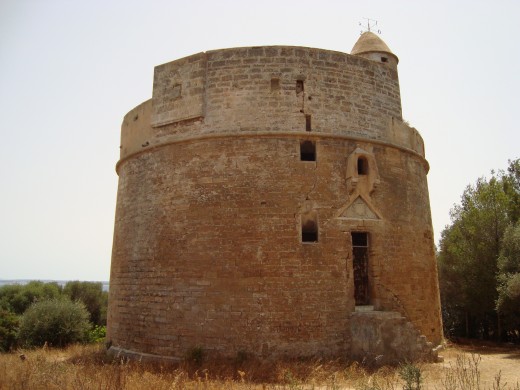
The massive town walls and gates
The most important landmark of Alcúdia, is the medieval town walls and the four gates opening to the town core. The town walls was built by king Jaume II, successor of king Jaume I, who conquered the island from the Moors, and finished in 1362 by Peter III of Aragon. The vulnerable location of the area, between the bays of Alcúdia and Pollenca, meant that frequent attacks from the seaside was a regular threat to the economy of this new town.
The walls and gates formed 26 guarded towers, which made the town a regular fortress. A rising bridge accessed the gates, and in the towers above soldiers could throw rocks and boiling water down on unwanted trespassers.
What’s more interesting, is the parish church of Sant Jaume that has been built into the town walls.
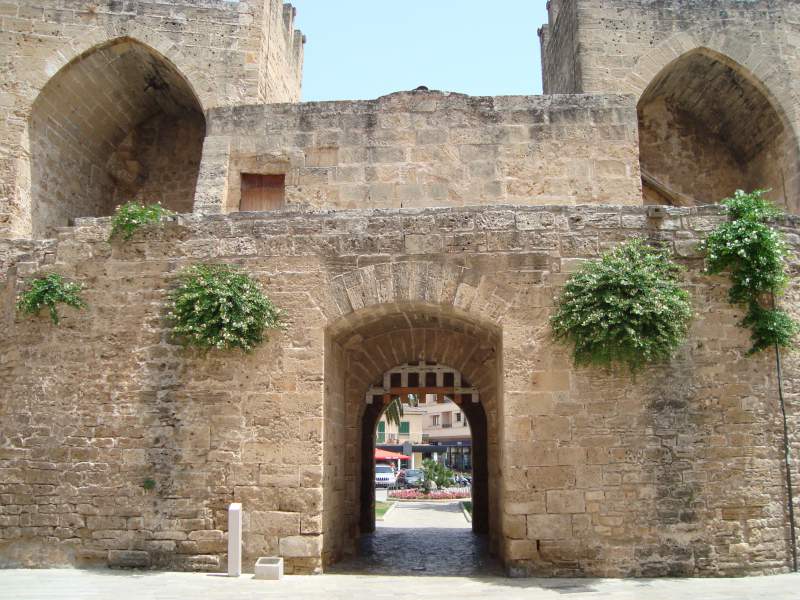 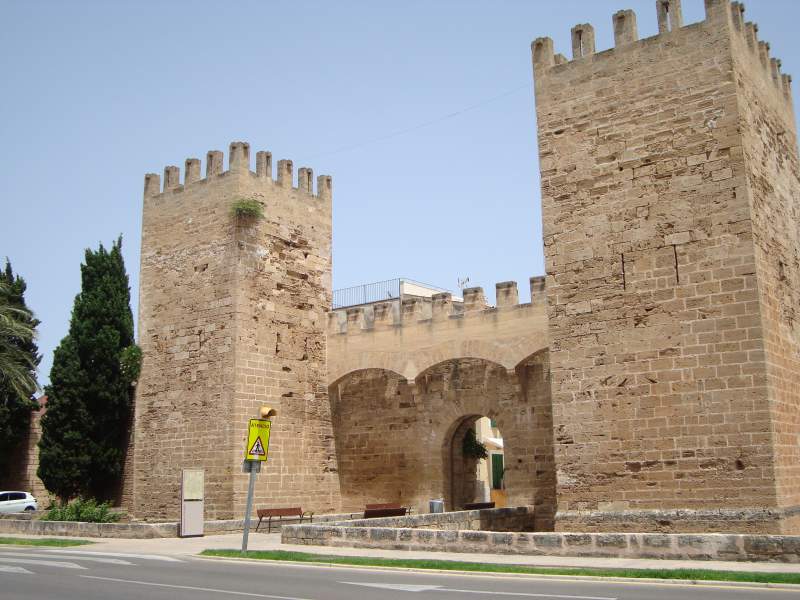 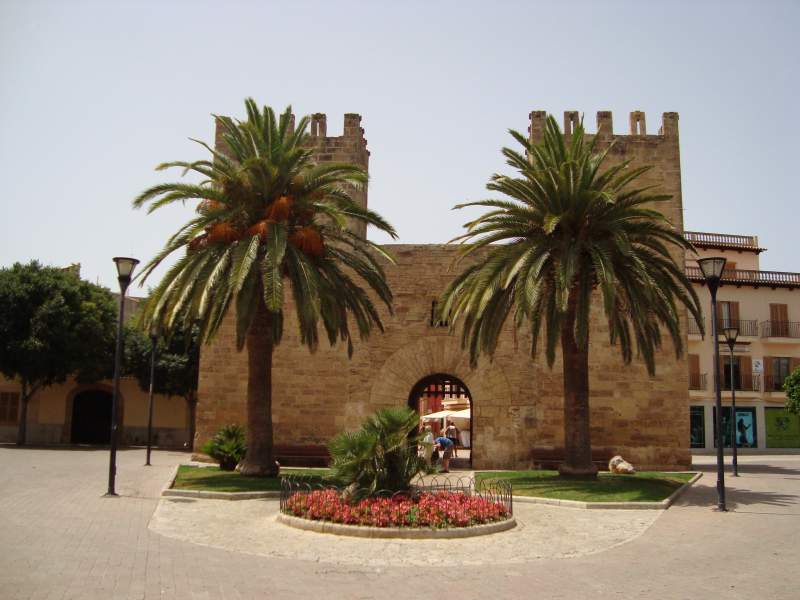
House facades of mixed architectural stylistics
As you stroll around the narrow streets of Alcúdia, you will notice the mixed architectural stylistics of the building facades. There’s the Arab district, the Baroque district and the special regionalist style of the tower of the city hall building. But Alcúdia is also home to former manor houses that belonged to intellectuals from Palma, who came here during the civil war of Mallorca (1521-1523). These houses, which carried Gothis stylistics, was transformed to Italian renaissance style decorated with adjoining columns, pilasters and heraldic coats of arms with plant, animal, ornamental and anthropomorphic motifs.

The Roman aguilla
In the Placa de Sant Charles, there is a beautiful sculpture of a Roman aguila (Eagle of the Roman legions), as a memory of the Roman occupation of this area.

s'Albufera wetlands
Home to more than 200 species of Mediterranean wildlife, the wetlands of s'Albufera is a must-see place of interest for any nature lover!
s'Albufera, measures impressive 2,580 hectares of scenic vegetation and small lagoons made accessible via charming small paths and bridges allowing you to explore the nature close hold.
s'Albufera is renown for its eels, which is a local delicacy up here in the northern areas of Mallorca. Ell, is the main ingredient in the pies called "Enseimadas", a delicious snack which is made with various vegetables.
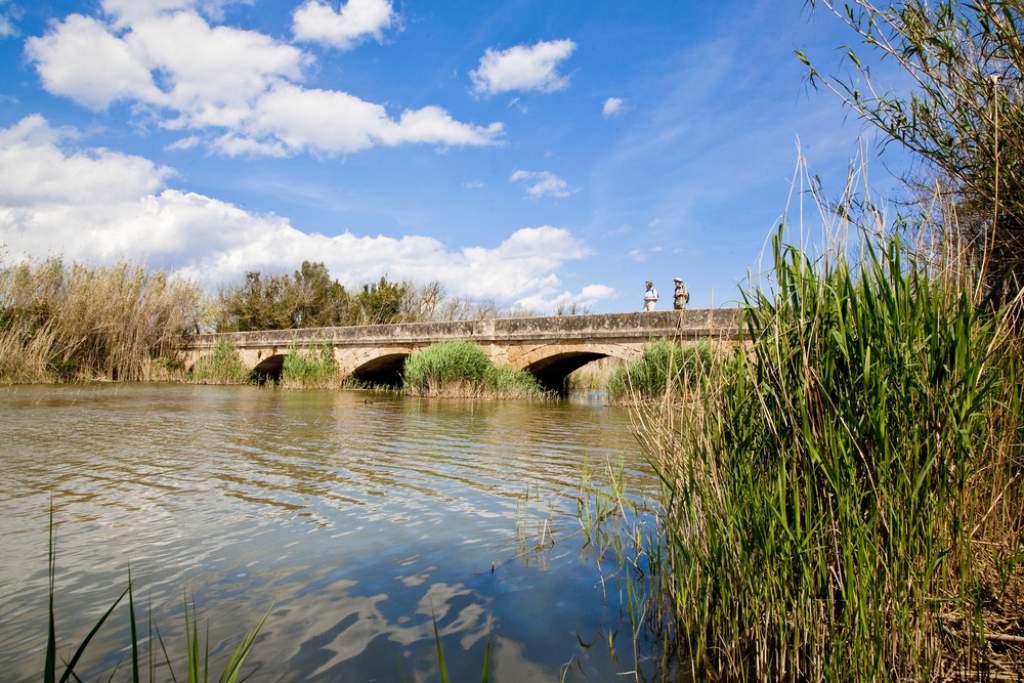
Old bullfighting arena of Alcúdia
Before it was made a bullfighting arena, this circular construction was a bastion of the medieval town walls and overall defense system of Alcúdia.
Bullfighting derives all the way back to the 13th century BC. It was originally a sacrifice to the gods, because the bull was synonym to fertility and power. Outside the village of Costitx in the heart of Mallorca, three bronze sculptures of bullheads was found in a prehistoric temple, as a an evidence of the bull as an animal of religious value. These three bullheads are now exhibited in the national museum of Spain in Madrid.
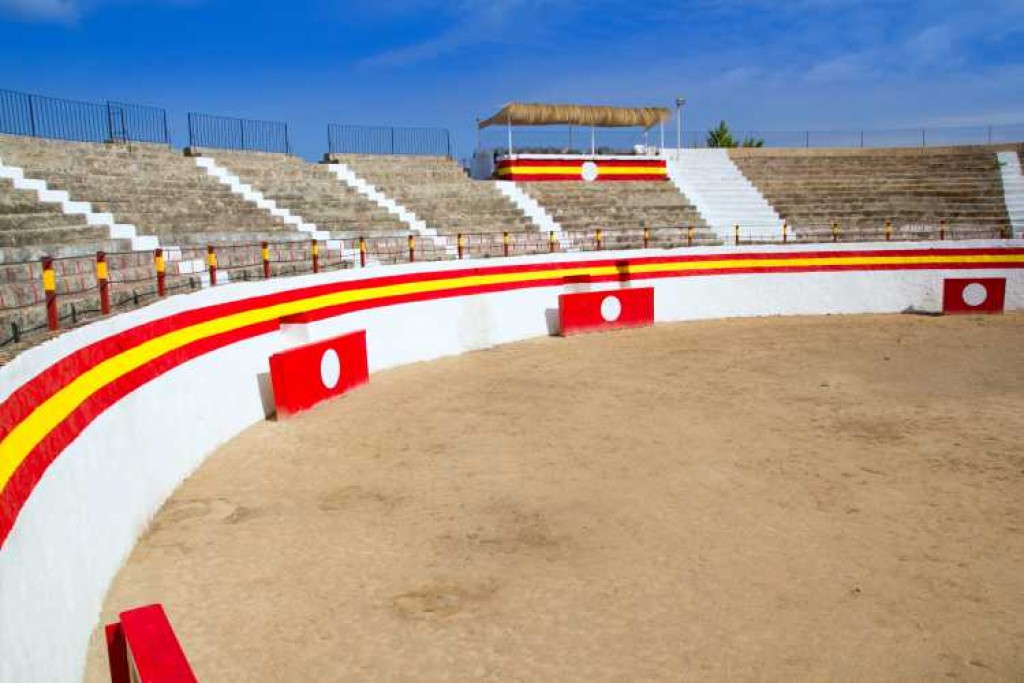
 0
Like
Published at 7:56 PM Comments (0)
0
Like
Published at 7:56 PM Comments (0)
Spam post or Abuse? Please let us know
|
|